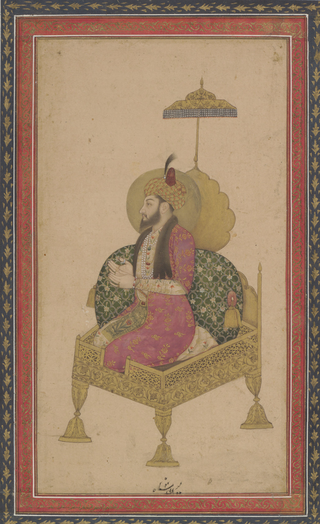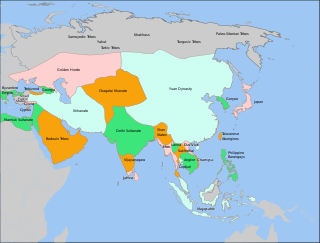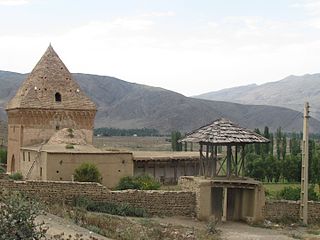Published works
The Aqquyunlu: Clan, Confederation, Empire. revised and expanded edition. Salt Lake City: University of Utah Press, 1999.
Fadlullah Khunji-Isfahani's Tarikh-i Alam-ara-yi Amini, Persian text edited by John E. Woods with an abridged English translation by Vladimir Minorsky, revised and augmented by John E. Woods. London: Royal Asiatic Society, 1992 [released 1993].
"Timur's Genealogy," Intellectual Studies on Islam, Essays Written in Honor of Martin B. Dickson, eds. Michel M. Mazzaoui and Vera B. Moreen (University of Utah Press: Salt Lake City, 1990), pp. 85–125.
The Timurid Dynasty, Papers on Inner Asia No. 14, Research Institute for Inner Asian Studies, Indiana University, Bloomington, 1990.
"The Rise of Timurid Historiography," Journal of Near Eastern Studies 48 (1987), pp. 81–108.
"Turco-Iranica II: Notes on a Timurid Decree of 1396/798," Journal of Near Eastern Studies 43 (1984), pp. 331–37.
"Turco-Iranica I: An Ottoman Intelligence Report on Late Fifteenth/Ninth Century Iranian Foreign Relations," Journal of Near Eastern Studies 38 (1979), pp. 1–8.
The Barlas were a Mongol and later Turkicized nomadic confederation in Central Asia. With military roots in one of the regiments of the original Mongol army, the Barlas spawned two major imperial dynasties in Asia: the Timurid Empire in Central Asia and Persia; and its later branch, the Mughal Empire in the Indian subcontinent.

The Timurid dynasty, self-designated as Gurkani, was a culturally Persianate Sunni Muslim dynasty or clan of Turco-Mongol origin descended from the warlord Timur. The word "Gurkani" derives from "Gurkan", a Persianized form of the Mongolian word "Kuragan" meaning "son-in-law". This was an honorific title used by the dynasty as the Timurids were in-laws of the line of Genghis Khan, founder of the Mongol Empire, as Timur had married Saray Mulk Khanum, a direct descendant of Genghis Khan. Members of the Timurid dynasty signaled the Timurid Renaissance, and they were strongly influenced by Persian culture and established two significant empires in history, the Timurid Empire (1370–1507) based in Persia and Central Asia, and the Mughal Empire (1526–1857) based in the Indian subcontinent.

The Timurid Empire, self-designated as Gurkani, was a late medieval, culturally Persianate, Turco-Mongol empire that dominated Greater Iran in the early 15th century, comprising modern-day Iran, Iraq, Afghanistan, much of Central Asia, the South Caucasus, as well as most of contemporary Pakistan and parts of contemporary North India and Turkey.

The Qara Qoyunlu or Kara Koyunlu, also known as the Black Sheep Turkomans, were a culturally Persianate, Muslim Turkoman monarchy that ruled over the territory comprising present-day Azerbaijan, Georgia, Armenia, northwestern Iran, eastern Turkey, and northeastern Iraq from about 1374 to 1468.

A Persianate society is a society that is based on or strongly influenced by the Persian language, culture, literature, art and/or identity.

Shah Rukh or Shahrukh Mirza was the ruler of the Timurid Empire between 1405 and 1447.

Mirza Jalal-ud-din Miran Shah Beg, commonly known as Miran Shah, was a son of the Central Asian conqueror Timur, founder of the Timurid Empire.

The Turco-Mongol or Turko-Mongol tradition was an ethnocultural synthesis that arose in Asia during the 14th century, among the ruling elites of the Golden Horde and the Chagatai Khanate. The ruling Mongol elites of these Khanates eventually assimilated into the Turkic populations that they conquered and ruled over, thus becoming known as Turco-Mongols. These elites gradually adopted Islam as well as Turkic languages, while retaining Mongol political and legal institutions.
The composite Turko-Persian, Turco-Persian or Turco-Iranian tradition was a distinctive culture that arose in the 9th and 10th centuries in Khorasan and Transoxiana.

Timur, later Timūr Gurkānī, was a Turco-Mongol conqueror who founded the Timurid Empire in and around modern-day Afghanistan, Iran, and Central Asia, becoming the first ruler of the Timurid dynasty. An undefeated commander, he is widely regarded as one of the greatest military leaders and tacticians in history, as well as one of the most brutal. Timur is also considered a great patron of art and architecture as he interacted with intellectuals such as Ibn Khaldun, Hafez, and Hafiz-i Abru and his reign introduced the Timurid Renaissance.

Transoxiana or Transoxania is the Latin name for a region and civilization located in lower Central Asia roughly corresponding to modern-day eastern Uzbekistan, western Tajikistan, parts of southern Kazakhstan, parts of Turkmenistan and southern Kyrgyzstan. Geographically, it is the region between the rivers Amu Darya to its south and the Syr Darya to its north.

The Timurid Renaissance was a historical period in Asian and Islamic history spanning the late 14th, the 15th, and the early 16th centuries. Following the gradual downturn of the Islamic Golden Age, the Timurid Empire, based in Central Asia ruled by the Timurid dynasty, witnessed the revival of arts and sciences. Its movement spread across the Muslim world. The French word renaissance means "rebirth", and defines a period as one of cultural revival. The use of the term for the description of this period has raised reservations among scholars, some of whom see it as a swan song of Timurid culture.
Ghiyas-ud-din Jahangir Mirza was a member of the Timurid dynasty and a son of its founder, the Central Asian conqueror Timur. He was Timur's favourite son and served as one of his military commanders as well as his heir apparent. However, Jahangir died in 1376, predeceasing his father by almost thirty years.
Sevin Beg Khanzada also known as Khanzada, was a princess of the Sufi dynasty, the ruling Turco-Mongol dynasty of Khwarezm, and daughter-in-law twice-over to the Central Asian conqueror Timur through her marriages to his sons Jahangir and Miran Shah. Through her maternal grandfather Jani Beg, she was a direct descendant of Genghis Khan.

Muhammad Sultan Mirza was a member of the Timurid dynasty and a grandson of its founder, the Central Asian conqueror Timur. As Timur's favourite grandson, Muhammad Sultan served as one of his principal military commanders, helping lead forces in successful campaigns against the Golden Horde, Persian kingdoms and the Ottoman Empire. Described by the historian Arabshah as "a manifest prodigy in his noble nature and vigour", Muhammad Sultan was eventually appointed by Timur as heir-apparent to the empire. His premature death in 1403 greatly affected his grandfather.

The Zafarnama is a panegyric book written by Sharaf al-Din Ali Yazdi approximately two decades after the death of its main subject, Timur, the Turco-Mongol conqueror. It was commissioned by Ibrahim Sultan, Timur's grandson between 1424–28, and remains one of the best-known sources of Timur's life. The text was written using the notes taken by royal scribes and secretaries of Timur, suggesting that the history of the book was based on a careful and desired selection of facts.
Qarachar Noyan, also spelt Karachar, was a Mongol military commander under Genghis Khan as well as a paternal ancestor of Timur, founder of the Timurid Empire.
Malikat Agha was a Mongol princess as well as one of the wives of Shah Rukh, ruler of the Timurid Empire.

Kayumarth I was the ruler (ustandar) of the Baduspanids from 1394 to 1453, with a three-year interruption. An active expansionist ruler, his kingdom experienced a resurgence during his long reign, which included the reconquest of Rustamdar. He was often at odds with his suzerain, the Timurid ruler Shah Rukh. After his death, a dynastic struggle followed, which resulted in his kingdom being split up by his sons Iskandar IV and Ka'us II, in Kojur and Nur respectively.
Nizam al-Din Shami, also known as Nizam-i Shami or Nizam al-Din Shambi, was a Persian man of letters and a chronicler who flourished in the late 14th and early 15th centuries. He wrote the Zafarnama, the earliest extant Timurid chronicle and the oldest surviving biography on Timur. Shami's Zafarnama was continued by Hafiz-i Abru, and would also form the basis of the better-known Zafarnama of Sharaf al-Din Ali Yazdi.











